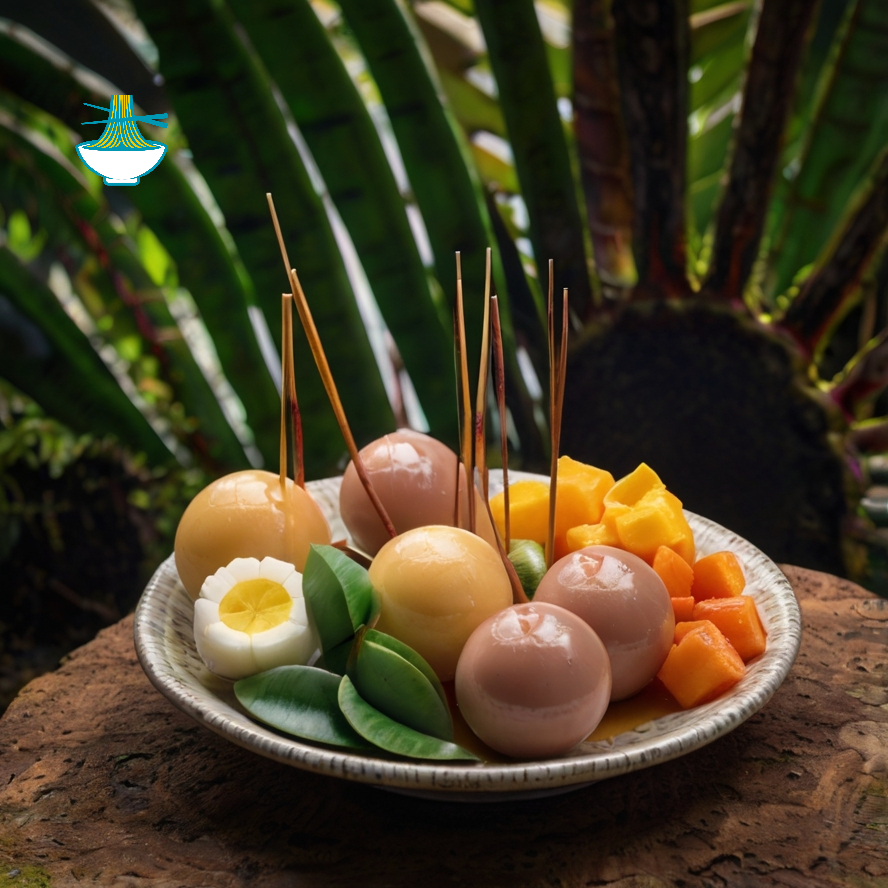Description: Delve into the rich culinary heritage of the Kingdom of Hawaii with this immersive exploration of poi, a beloved traditional staple. Made from fermented taro root, poi holds deep cultural significance and has been a dietary cornerstone for generations in Hawaii. Join us as we uncover the history, preparation methods, and cultural importance of this iconic Hawaiian dish, offering a flavorful glimpse into the kingdom's past and present.
Ingredients:
- 2 pounds taro root
- Water
- Salt (optional, to taste)
Instructions:
1- Peel the taro roots, removing any tough outer skin.
2- Cut the taro into small cubes, roughly 1-inch in size.
3- Place the cubed taro into a large pot and cover with water.
4- Bring the water to a boil over medium-high heat, then reduce the heat to a simmer.
5- Allow the taro to cook until it is fork-tender, usually around 20-30 minutes.
6- Once the taro is cooked, drain off the water and allow the taro to cool slightly.
7- Transfer the cooked taro to a large bowl or traditional wooden poi pounder (poi pounders are typically made from hardwood).
8- Begin mashing the taro with a wooden pestle or pounder, gradually adding small amounts of water as needed to achieve a smooth, pudding-like consistency. The texture should be thick but spreadable.
9- Continue mashing and pounding the taro until it reaches the desired consistency, adding salt to taste if desired.
10- Serve the poi immediately, or store it in the refrigerator for later use. Poi can be enjoyed on its own or as a side dish with various Hawaiian meals.
Note: Traditional poi pounding involves a specific technique and rhythm, but if a poi pounder is not available, a sturdy bowl and wooden spoon can be used as alternatives. Additionally, poi can vary in thickness according to personal preference; some prefer it thicker, while others prefer it thinner and more liquid. Adjust the amount of water accordingly to achieve the desired consistency.
Nutritional Values :
Here are the nutritional values and benefits for the ingredients you mentioned:
Here is the nutritional information and benefits of the ingredients:
Taro Root (2 pounds):
- Calories: Approximately 760-880 calories
- Carbohydrates: 180-200 grams
- Protein: 4-6 grams
- Fat: 0.4-1 gram
- Fiber: 16-20 grams
- Vitamins:
- Vitamin C: 20-30% of the daily value (DV)
- Vitamin E: 5-7% of DV
- B vitamins (B6, B1, B5)
- Minerals:
- Potassium: 30-40% of DV
- Magnesium: 10-15% of DV
- Phosphorus: 20-25% of DV
- Manganese: 30-35% of DV
Benefits:
- Digestive Health: High in dietary fiber, promoting regular bowel movements and aiding digestion.
- Antioxidant Properties: Contains vitamins like C and E, which help protect cells from oxidative stress.
- Blood Pressure Regulation: Rich in potassium, which can help manage blood pressure levels.
- Energy Source: High in complex carbohydrates, providing sustained energy release.
Water:
- Calories: 0 calories
- Nutritional Content: Pure water contains no significant vitamins or minerals.
Benefits:
- Hydration: Essential for maintaining bodily functions, including digestion, absorption, circulation, and temperature regulation.
- Detoxification: Helps flush toxins from the body.
- Joint Health: Lubricates joints, reducing the risk of injury.
- Skin Health: Keeps skin hydrated, improving elasticity and appearance.
Salt (optional, to taste):
- Calories: 0 calories
- Nutritional Content: Primarily sodium chloride.
- Sodium: 2,300 mg per teaspoon (approximately 100% of DV)
Benefits:
- Electrolyte Balance: Helps maintain the balance of fluids in the body.
- Nerve Function: Essential for proper nerve impulse transmission and muscle contraction.
- Flavor Enhancement: Enhances the taste of food, making it more enjoyable.
Note: Excessive salt intake can lead to high blood pressure and other health issues, so it's best to use it sparingly.
Please note that these values are approximate and can vary based on factors such as cooking method and specific variety of taro root used. Additionally, the nutritional values of the recipe may be impacted by any additional ingredients or seasonings added during preparation.


Comments